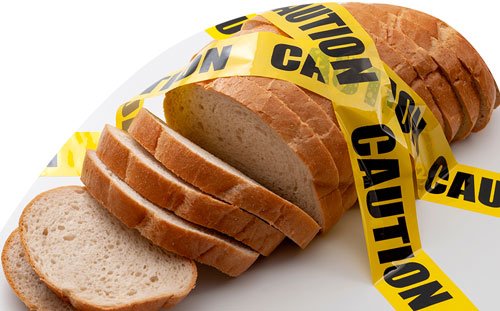Happiness for Beginners – How to Achieve True Happiness in Life
What does happiness look like to you? Is it a moment of laughter with loved ones, the pride of achieving a lifelong dream, or simply a sense of peace at the end of the day? No matter how we define it, one thing is sure: we all want to feel happy. Yet, for many, happiness can seem elusive, slipping through our fingers when we need it most.

Here’s the thing—happiness isn’t something you “find” or stumble upon. It’s a journey, a collection of choices and actions that guide us toward a more fulfilling life. It’s not about chasing fleeting moments of joy but about cultivating a lasting sense of contentment and purpose.
Understanding happiness
Happiness is often described as a feeling of joy, satisfaction, or contentment, but it’s much deeper than a fleeting emotion. True happiness is a state of well-being where life feels meaningful and fulfilling. It’s waking up each day with a sense of purpose and going to bed feeling at peace.
However, not all happiness is created equal. Think of the joy you feel after eating your favorite dessert or buying a new gadget. These moments are delightful, but they’re temporary—they fade as quickly as they come. This is what psychologists call hedonic happiness: pleasure derived from short-term experiences.
On the other hand, sustainable happiness is rooted in more profound, more enduring elements like meaningful relationships, personal growth, and contributing to something greater than yourself. This is often called eudaimonic happiness, which comes from living a life aligned with your values and purpose.
Understanding the difference between these two types of happiness is key to setting goals that lead to long-lasting fulfillment.
The science of happiness
Happiness isn’t just a feel-good concept—it’s a well-studied field in psychology and neuroscience. Researchers have found that happiness is influenced by a combination of factors: genetics, environment, and intentional actions.
While some aspects are out of our control, a significant portion—estimated to be around 40%—is shaped by our choices and mindset.
For example, studies show that practicing gratitude can significantly boost happiness levels by rewiring the brain to focus on positive experiences. Similarly, maintaining strong social connections is one of the most reliable predictors of happiness, as humans are wired for connection.
Our environment also plays a vital role. Spending time in nature, surrounding yourself with positive influences, or even living in a community with a strong sense of belonging can significantly enhance your well-being.
Finally, mindset is everything. People with a growth-oriented mindset—those who see challenges as opportunities and setbacks as temporary—tend to report higher levels of happiness. By intentionally cultivating habits and environments that nurture these aspects, you can build a foundation for lasting happiness.
Understanding happiness is the first step toward achieving it. By recognizing its deeper dimensions and the factors influencing it, you’re already one step closer to creating a more joyful and meaningful life.
Why treat happiness as a goal?
Have you ever noticed how much effort people put into things like getting good grades, winning a sports championship, or landing a dream job? They set goals, make plans, and work hard to achieve them. So why not do the same for happiness?
Happiness isn’t something that just magically happens. Sure, some days might naturally feel better than others, but if you don’t pay attention to what truly makes you happy, it’s easy to get stuck in a routine that doesn’t bring much joy.
Treating happiness like a goal helps you focus on the things that matter most to you. It’s about being intentional—making choices every day that bring you closer to the life you want.
Clarify your definition of happiness
Happiness isn’t the same for everyone. What makes one person smile might not matter to someone else—and that’s okay. To set a goal for happiness, you first need to figure out what happiness means to you.
Take a moment to reflect: When was the last time you felt truly happy? What were you doing? Who were you with? Your answers might reveal clues about what makes you feel your best.
For some people, happiness might mean building closer relationships with family and friends. For others, it could be finding a career that feels meaningful or having the freedom to travel and explore the world. Here are a few examples of personal happiness goals:
- Spending more quality time with loved ones.
- Picking up a hobby that brings you joy, like painting or playing a sport.
- Learning a new skill that boosts your confidence, like cooking or public speaking.
- Creating a daily routine that includes self-care, like exercise or meditation.
Whatever your idea of happiness looks like, it’s important to make it your own. Once you know what you’re aiming for, it becomes much easier to take steps toward making it happen.
Setting happiness as a goal is about taking control of your life and choosing to focus on what truly matters to you. By reflecting on your personal definition of happiness and setting clear goals, you’re already on the right path to a happier, more fulfilling life.
Cultivate self-awareness
Have you ever thought about what makes you happy or stressed? Knowing these things can help you feel more in control of your emotions. When you understand your triggers for joy and stress, it’s easier to make choices that bring you closer to happiness.
One way to get to know yourself better is by journaling. Write down your thoughts, feelings, and experiences each day. Over time, you’ll notice patterns, like the activities or people that make you smile. Another way is practicing mindfulness—taking a few minutes to focus on your breath and how you feel in the moment. This helps you stay present and more aware of what truly matters.
Practice gratitude
Did you know that being thankful can actually make you happier? Gratitude helps you focus on the good things in your life instead of dwelling on the bad. Even on tough days, there’s always something to appreciate, like a kind word from a friend or a sunny afternoon.
Try starting a gratitude journal. Each day, write down three things you’re grateful for. They can be big, like your family, or small, like your favorite snack. Saying thank you to others or showing appreciation through small acts of kindness is another great way to practice gratitude.
Build positive habits
Sometimes, little changes can make a big difference in your happiness. Positive habits—things you do regularly—can boost your mood and energy.
For example, exercising doesn’t just make you stronger; it also helps your brain release chemicals that make you feel good. Spending time with friends or family can make you feel connected and supported. Even something as simple as smiling at a stranger or going to bed earlier can help. Start small, and over time, these habits will make your life feel brighter.
Strengthen relationships
The people in your life play a huge role in your happiness. Strong, healthy relationships make you feel loved, supported, and understood.
To build better connections, focus on listening more and talking openly about your feelings.
Spend quality time with loved ones, like playing games or just hanging out. Show kindness and be there for others when they need you. Remember, good relationships take effort, but they’re worth it!
Embrace resilience
Life isn’t always easy, but learning how to bounce back from setbacks is an integral part of happiness. Resilience is the ability to stay strong and positive, even when things go wrong.
When challenges come your way, try to look for the lesson in the situation. Ask yourself, “What can I learn from this?” Surround yourself with supportive people and take care of yourself, both physically and emotionally. Remember, every tough moment you overcome makes you stronger.
Give back
Happiness isn’t just about what you get; it’s also about what you give. Helping others can make you feel good inside and remind you of how much you have to offer.
You don’t need to do something huge to make a difference. Small acts, like helping a neighbor, volunteering at an animal shelter, or simply being kind to a stranger, can brighten someone else’s day—and yours too. When you give back, you create a ripple effect of positivity that spreads far beyond yourself.
By following these steps—getting to know yourself, practicing gratitude, building healthy habits, improving relationships, staying resilient, and giving back—you’ll be well on your way to achieving lasting happiness. Each small step brings you closer to a joyful, fulfilling life.
The myth of constant happiness
Have you ever looked at someone and thought, Wow, they must be happy all the time? It’s easy to believe that happiness means feeling great every second of every day. But here’s the truth: nobody is happy all the time—and that’s perfectly normal.
Life has its ups and downs, like a rollercoaster. There will be amazing moments that make you feel on top of the world and tough times that test your strength. The key is to accept that happiness doesn’t mean being cheerful 24/7. Instead, it’s about finding joy in the little things, even during hard times, and knowing that bad days don’t last forever.
Dealing with obstacles
When life gets tough, it’s easy to feel stuck or overwhelmed. But challenges are a normal part of the journey, and with the right strategies, you can get through them. Here are some tips to help you stay on track:
Take a Break: When you’re stressed or upset, give yourself time to pause and breathe. Go for a walk, listen to music, or do something that helps you relax.
Talk to Someone: Share your feelings with a friend, family member, or teacher. Sometimes, just talking things out can make a big difference.
Focus on What You Can Control: Not everything in life is in your hands, and that’s okay. Instead of worrying about what you can’t change, focus on the things you can do to make the situation better.
Learn from Setbacks: Think of challenges as lessons in disguise. Ask yourself, What can I learn from this? How can I grow stronger because of it?
Stay Positive: Even during tough times, try to look for the silver lining. Maybe you made a new friend, learned a skill, or discovered a strength you didn’t know you had.
Take Small Steps: If a problem feels too big, break it into smaller parts. Tackle one step at a time, and you’ll feel more in control.
Remember, challenges are part of life, but they don’t define you. Every time you overcome an obstacle, you prove how strong and capable you are. And with each step forward, you get closer to the happiness you’re working toward.
Here's the truth: Happiness isn’t something you just stumble upon—it’s something you build with your actions and choices every day.
Happiness is within reach for everyone, including you. It’s not about being perfect or feeling good all the time—it’s about taking small, intentional steps toward a life that brings you joy and fulfillment.
So, what’s your first step going to be? Will you start a gratitude journal, reconnect with a friend, or take a few minutes to reflect on what makes you truly happy? Whatever you choose, start today. The path to happiness begins with one small step, and you’re capable of creating a life filled with joy, purpose, and meaning.





















































